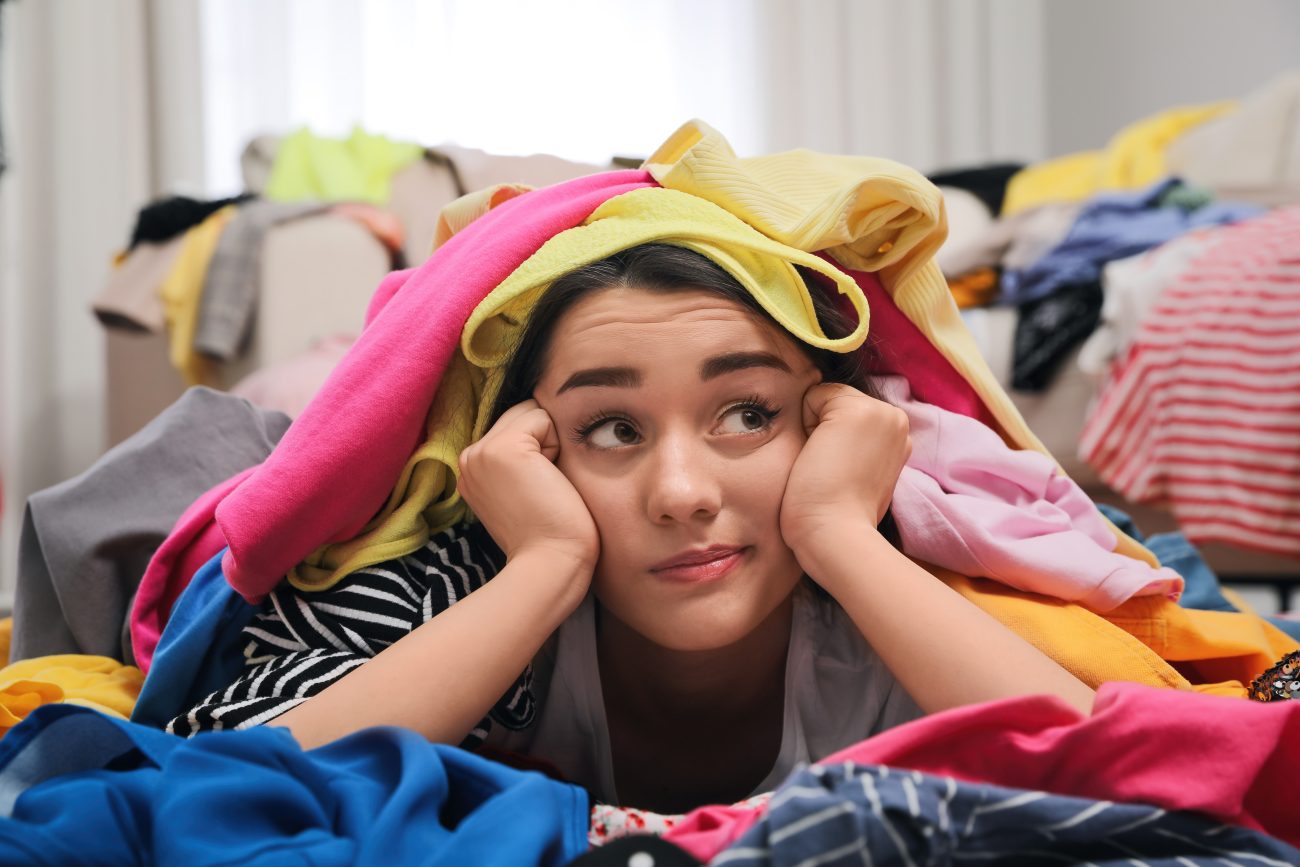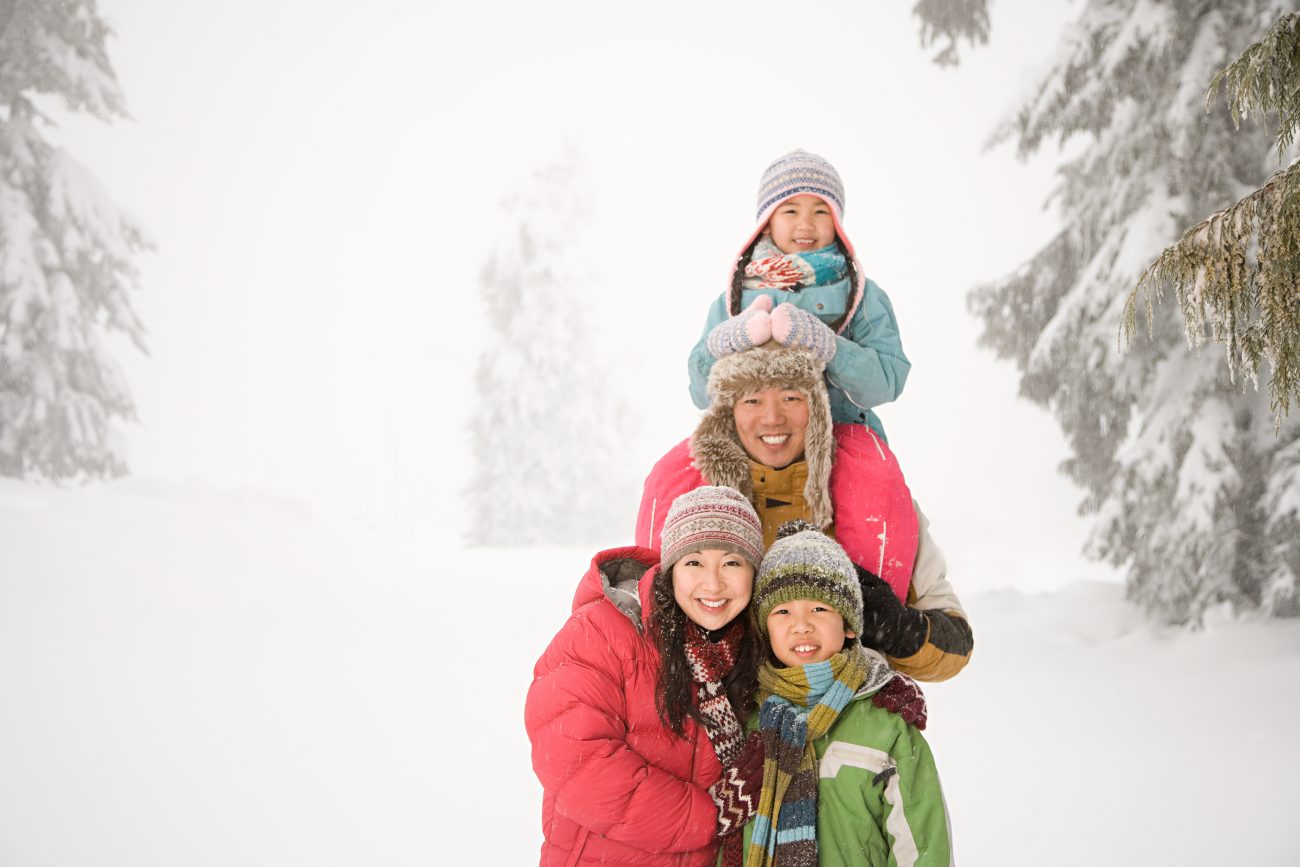Fast fashion is everywhere. A trip to the mall or a link on TikTok is bound to lead you to a t-shirt, a pair of jeans, or a dress that falls under the category of fast fashion. It’s a label that gets applied to a lot of clothing items but what does it really mean and why does it have such a bad reputation when it comes to the environment and human rights?
What is fast fashion?
To understand why fast fashion has become a problem, we need to know what it is. The term “fast fashion” popped up in the media in the ‘90s when clothing brands began to design, sew, and ship fashion to stores, well, faster. Like, in just over two weeks. This meant that new items were coming in at a higher rate, pushing trends and styles to change faster and more often. Fast-changing trends meant that people who wanted to keep up with the latest style were encouraged to buy more items more frequently.
What is the cost of fast fashion?
On the rack or online, fast fashion retailers appear to offer low prices for on-trend items. The real story is that we’re actually paying a high price for these seemingly low-cost clothes. And that cost is not necessarily in dollars. A $29.99 jean skirt might seem cheap… but there’s also a real cost (which comes in the form of polluted oceans, overflowing landfills, and high carbon emissions ) that’s hidden.
Fast fashion facts
- As an industry, fashion produces 10% of the world’s carbon emissions
- Fashion is the second-biggest industrial consumer of our water supply after agriculture
- It takes 7,500 litres of water to make one pair of jeans
- 20% of all industrial water pollution comes from the fashion industry
- The equivalent of 50 billion plastic bottles in microfibres are released into the ocean every year when we wash our clothes
- In the last 25 years, the amount of clothing produced has nearly doubled
- Approximately one garbage truck full of used and discarded clothing is either burned or sent to the landfill every second
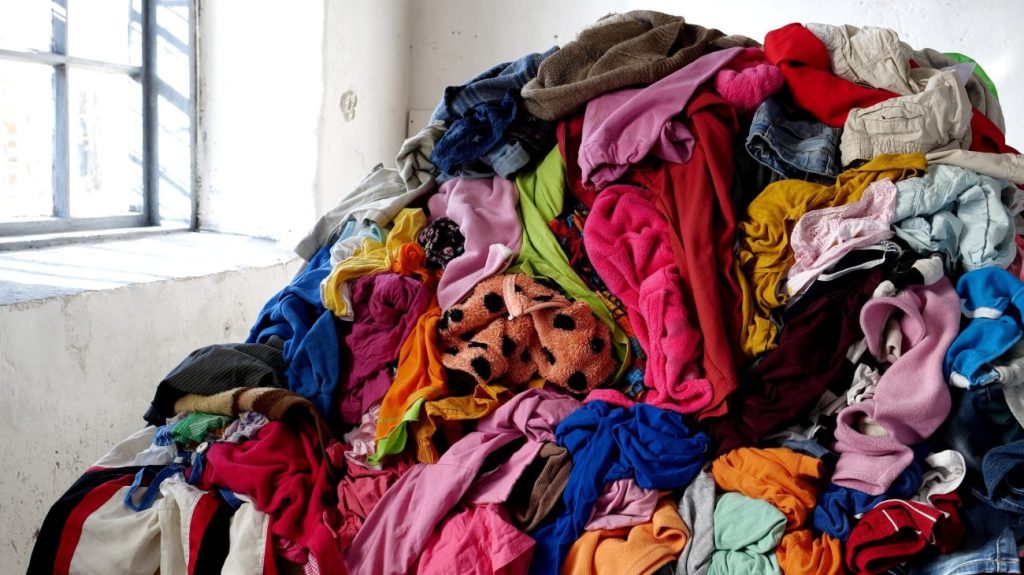
What are the environmental and social impacts of fast fashion?
Our fast fashion purchases make an impact that goes waaaaaay beyond our overstuffed closets and those unworn pieces that we’re forever waiting for the “right” time to wear. Fast fashion contributes to a laundry list of environmental and social problems we’re struggling to solve.
Landfill overflow
In ancient times (like the 1950s) shopping for clothes wasn’t something you did for fun on a Saturday or late at night after falling down an Instagram retail hole. Most people shopped for something because they needed it. Now, we may be shopping for fun, out of boredom or habit instead of out of necessity. Because we don’t necessarily need all of the clothes we buy, our old stuff (sometimes even the things we think we’re donating) ends up in landfills.
And we’re not the only ones sending clothing to our city’s garbage dumps. Out of all the items that fashion brands produce, one quarter of them aren’t sold. Social media is full of videos busting retailers for throwing unsold items directly into the dumpster. But did you know that brands also send items you return directly to landfills? That’s because it costs less to throw them out than to return them to the racks.
Microplastic pollution
Fast fashion brands love to make clothes from nylon and polyester fabrics because they’re inexpensive. They’re also full of microplastics that come off in your washer and dryer and head straight for our rivers, lakes, and oceans. Did you know, half a million tons of microplastics end up in the planet’s oceans each year? (Sustainability pro tip: hanging your clothes to dry dramatically cuts down on this specific kind of pollution.)
High energy and water consumption
It takes a LOT of water to make textiles. After agriculture, the fashion industry comes in second in terms of water use. According to the World Bank, the industry uses enough water for five million people! The water that’s used is often returned to nearby rivers and lakes as untreated wastewater, causing harm to animals, fish, plant life, and the drinking water supply.
Fossil fuels also play a big part in fast fashion — from transporting clothes from the factory floor to the store, to turning plastics into fabrics like nylon and polyester. And don’t forget emissions: the industry has a bigger carbon footprint than the airline and the shipping industry combined.
Poor labour practices
The fashion industry has a long and unflattering record of unsafe and exploitative labour practices. And while workers in Canada have organized to demand their rights for safe work environments and to be paid a fair wage, these rights don’t always extend to the people who make fast fashion in other countries.
The human cost of fast fashion shows up in a few different ways: the people making our clothing could often be underpaid and work long shifts without proper breaks to rest; a lack of environmental regulations in their countries can mean that the industry pollutes their local land and water resources; and, at the other end of the cycle, our unwanted clothing often ends up back in communities in the Global South (also known as developing countries), flooding their markets so that independent sellers can’t make a living and filling up their landfills with our trash.
Read more: 10 climate change activists making a difference.
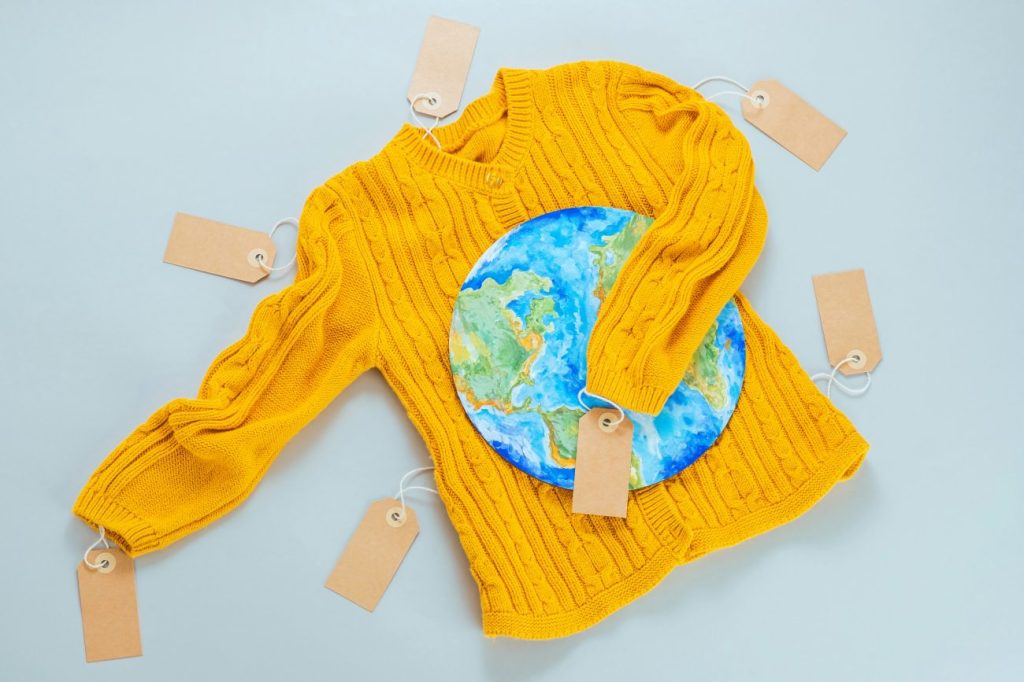
How do I know if I’m buying fast fashion?
First of all: it isn’t easy! Don’t blame yourself if you look in your closet and see clothing you’ve bought from fast fashion retailers. Fashion companies don’t necessarily share data on how many items they produce, how many they trash, incinerate, or ship to the Global South. When you’re trying to find out if you’re contributing to the problem of fast fashion, you come up against a wall standing between you and the information you need to make good decisions.
There are a few resources you can turn to in order to figure out if the brands you’re buying fall into the fast fashion category. One is the brand rating site (and app!) Good On You, which rates clothing retailers based on how well they treat the planet, animals, and people according to publicly available data. Better World Shopper is another resource that guides your shopping based on human rights, the environment, animal welfare, and social justice.
IRL, there are also a few telling signs that indicate that a piece of clothing classifies as fast fashion. Look out for:
- Cheap fabrics that don’t feel nice to wear or touch
- A low, too-good-to-be-true price point
- Stores with racks and racks of items in hundreds of styles
- Quick inventory turnover that’s there one day and gone the next
- Labels that indicate that the item was made in a country that might not have strong labour or environmental protection laws
Five tips on how shop without buying fast fashion
Even though it might feel like fast fashion is everywhere these days, it is possible to shop for clothes that you need and will love for a really long time without supporting brands that don’t support people and the environment.
Go thrifting or shop from online resellers
Thrift shopping combines the thrill of a treasure hunt with money-saving satisfaction AND the knowledge that you’re shopping sustainably. If thrift shops don’t stock the styles you’re searching for, try online resellers that range from the specific (like Instagram’s Noihsaf Bazaar) to the all-encompassing (like eBay).
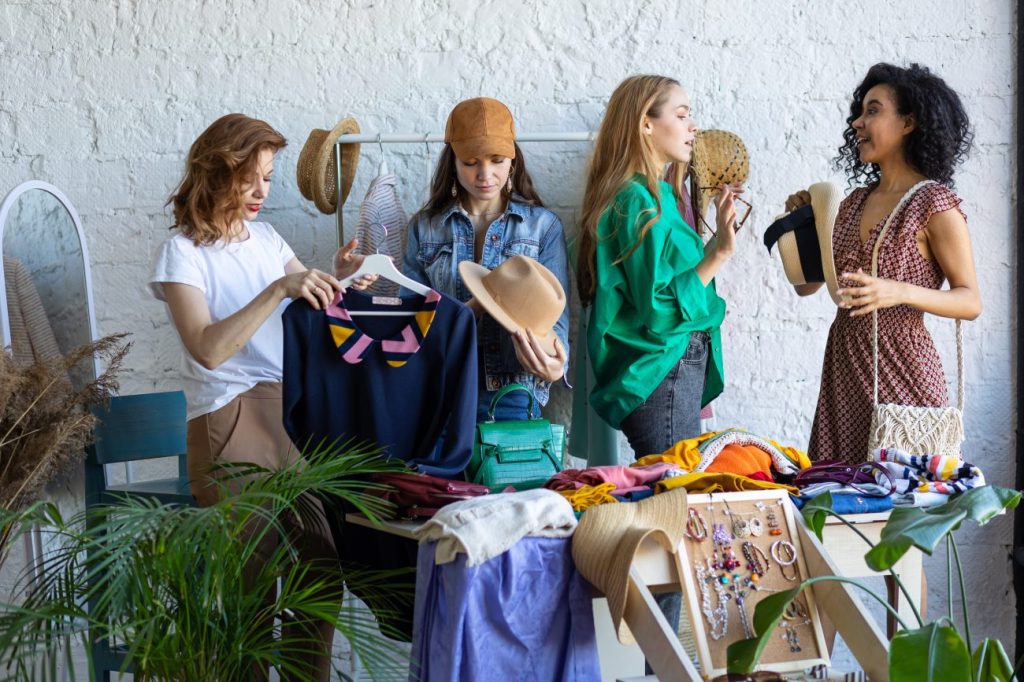
Host a clothes swap
Here’s where your formerly favourite dress becomes your BFF’s new go-to look. Having your friends (and their friends) over to trade items that are still in great shape but no longer suit your personal style is a situation where everyone wins. And looks amazing.
Rent clothing
Ever since Rent the Runway launched way back in 2009 clothing rental companies have been doing big business. Think of using clothing rental services for big occasions where you might otherwise buy an outfit you’d only wear once (like your prom, or graduation).
Learn to sew
Sewing is basically a superpower that lets you repair your favourite clothes, alter the fit, or totally transform them into something new and creative. Whether you do it with a machine or by hand, it’s definitely a sustainable way to keep your wardrobe up to date.
Purchase sustainable fashion
The problem with sustainable fashion is that it costs money to produce and, as a result, often comes with a higher price tag. Even if you can afford an item made from sustainable materials and using sustainable production, it can feel difficult to justify spending so much. One way to look at it is to think about price per wear. Let’s say a trendy top at a fast fashion retailer costs $40. It’s super on-trend but because trends move so quickly you only end up wearing it four times. In the end, the item costs you $10 per wear.
On the other hand, you fall in love with a $200 pair of jeans, do your research, and find out that not only are they made to last, but they’re made with sustainably sourced cotton in a factory where workers are well paid and the brand offers a repair services to extend the life of your jeans. You’ll easily wear this favourite item 200 times over the next five years. The cost per wear is now $1. Which item is truly more affordable?
Not sure what the cost-per-use will be? Our Should I Buy It Quiz does the math for you!
Fast fashion is can hurt the environment and your bank balance. Creating a style that’s individual and uniquely you will help you avoid the trap of short-lived trends and wasted cash. You’ll not only be more fashion-savvy, but you’ll gain the kind of money smarts that come from carefully investigating where and how you spend.
Download Mydoh and help build the foundation of financial literacy for kids and teens.
